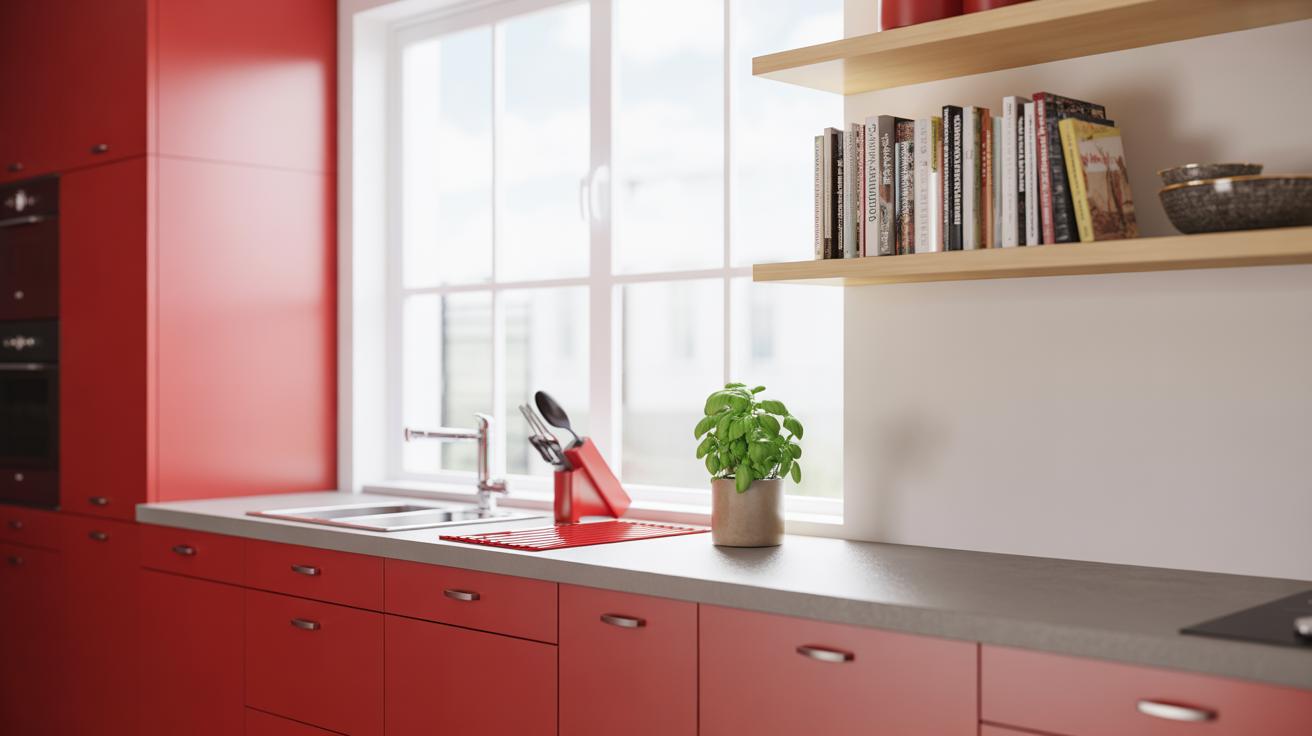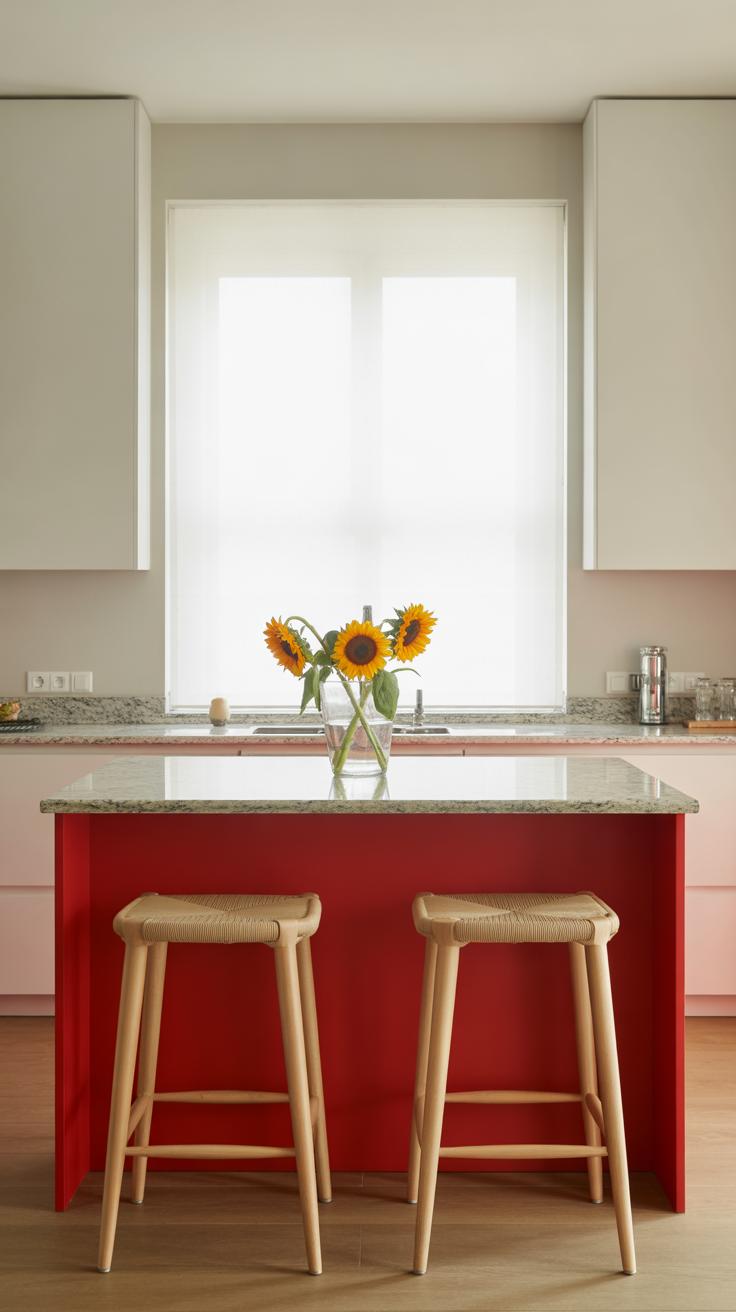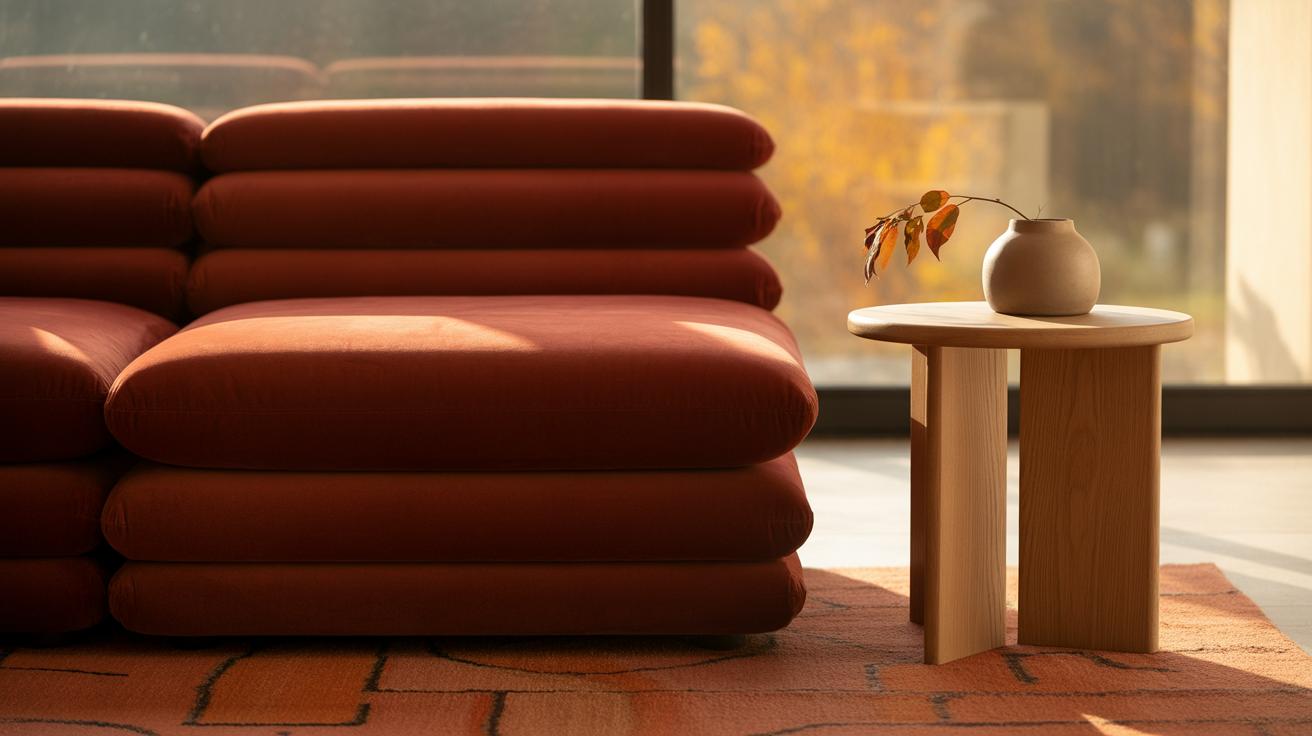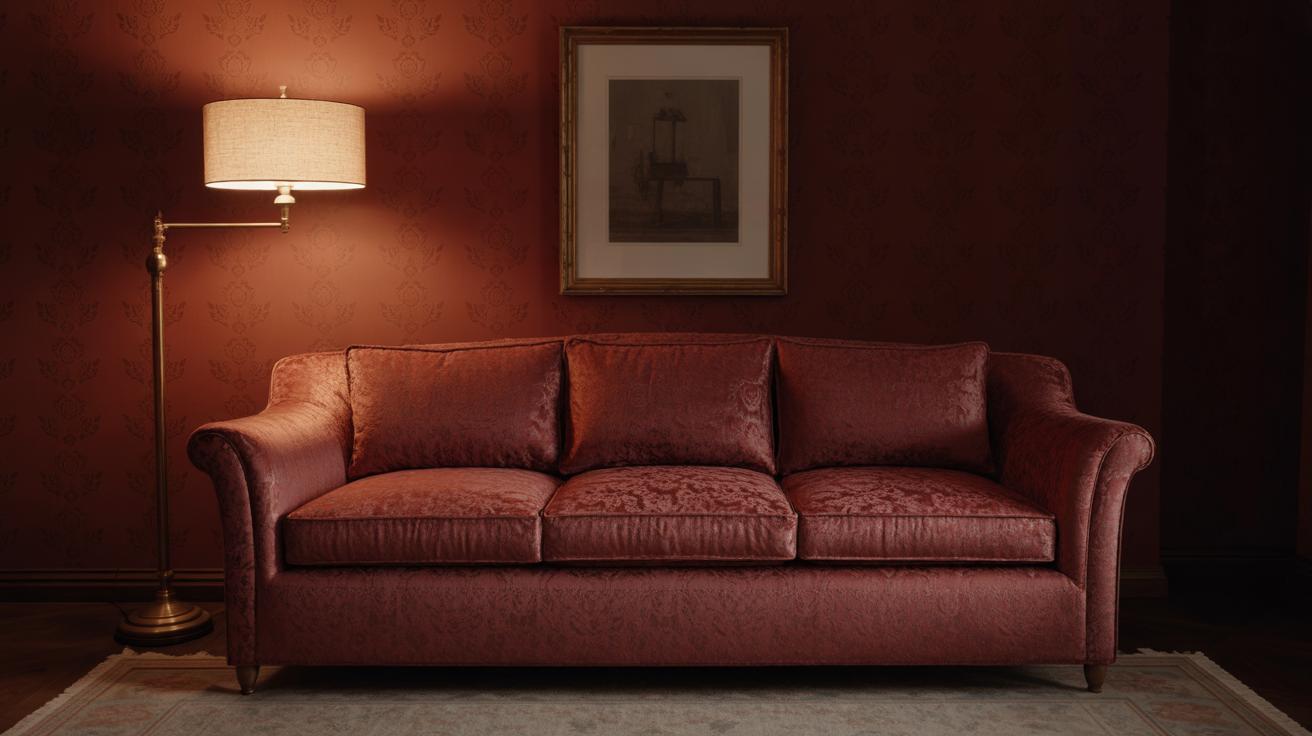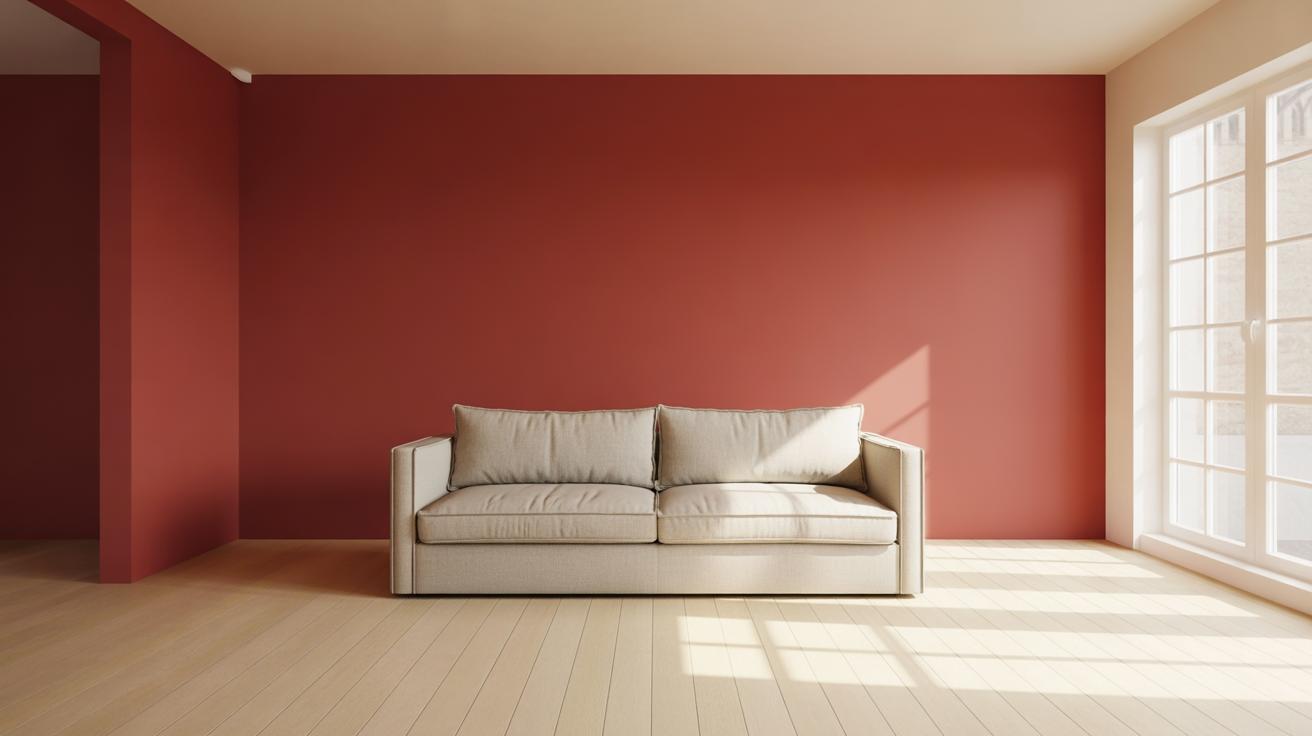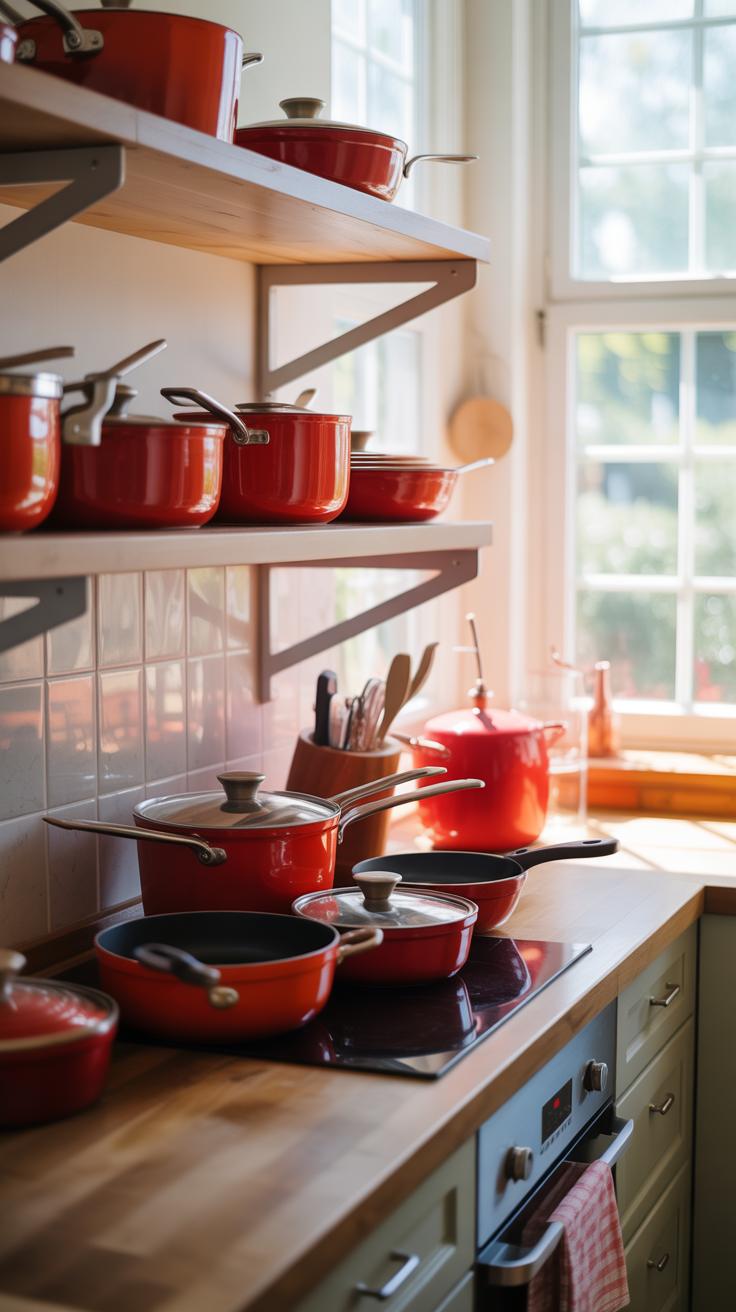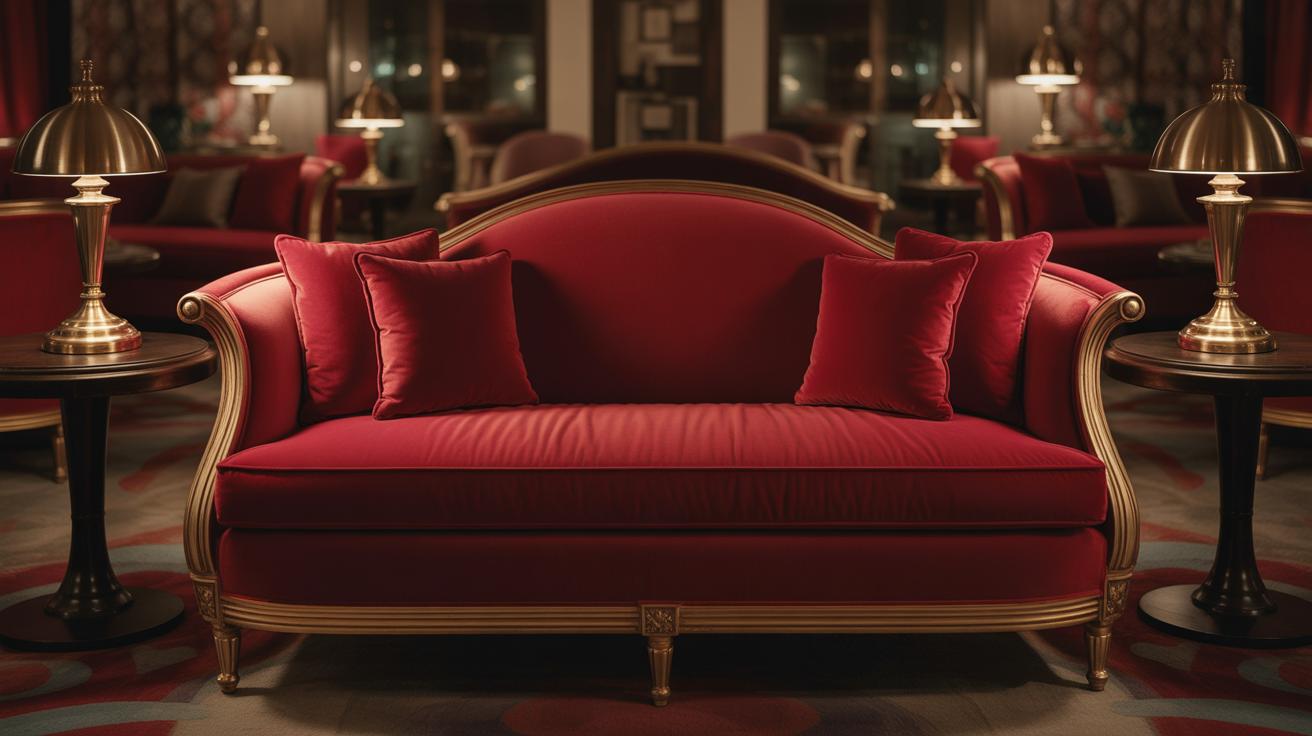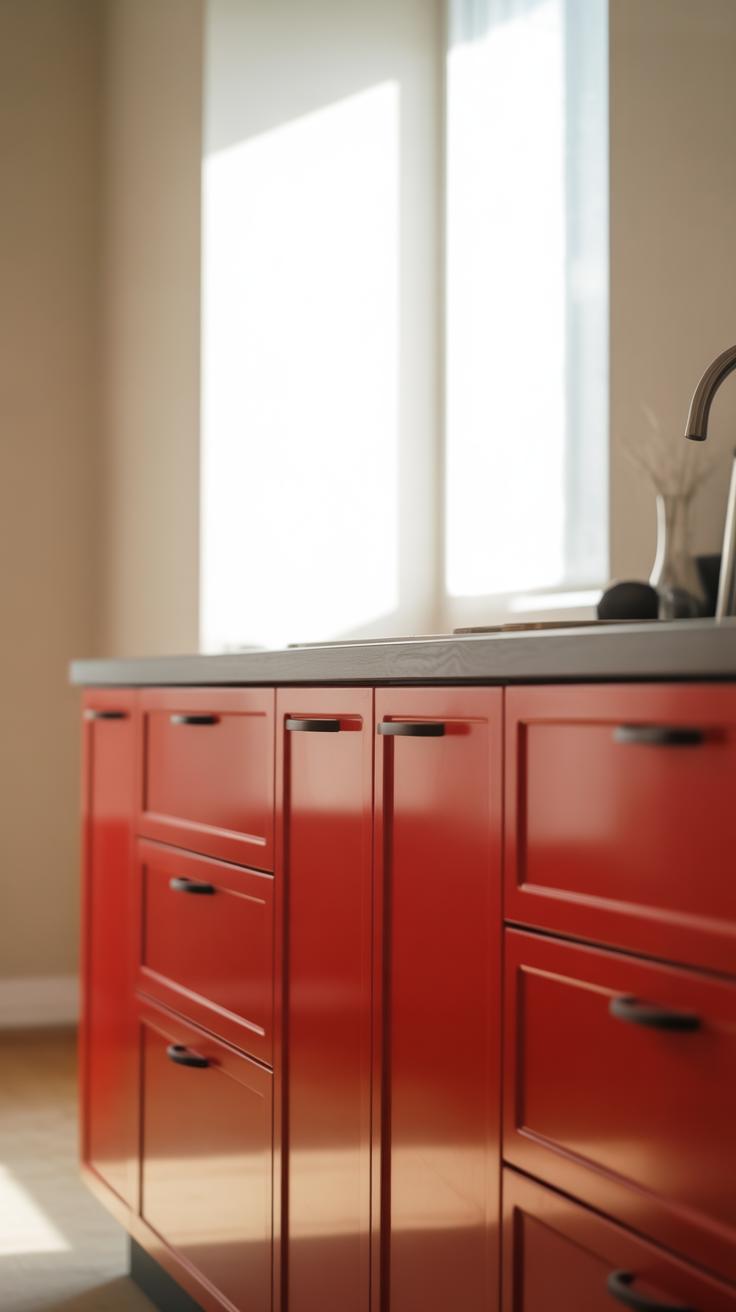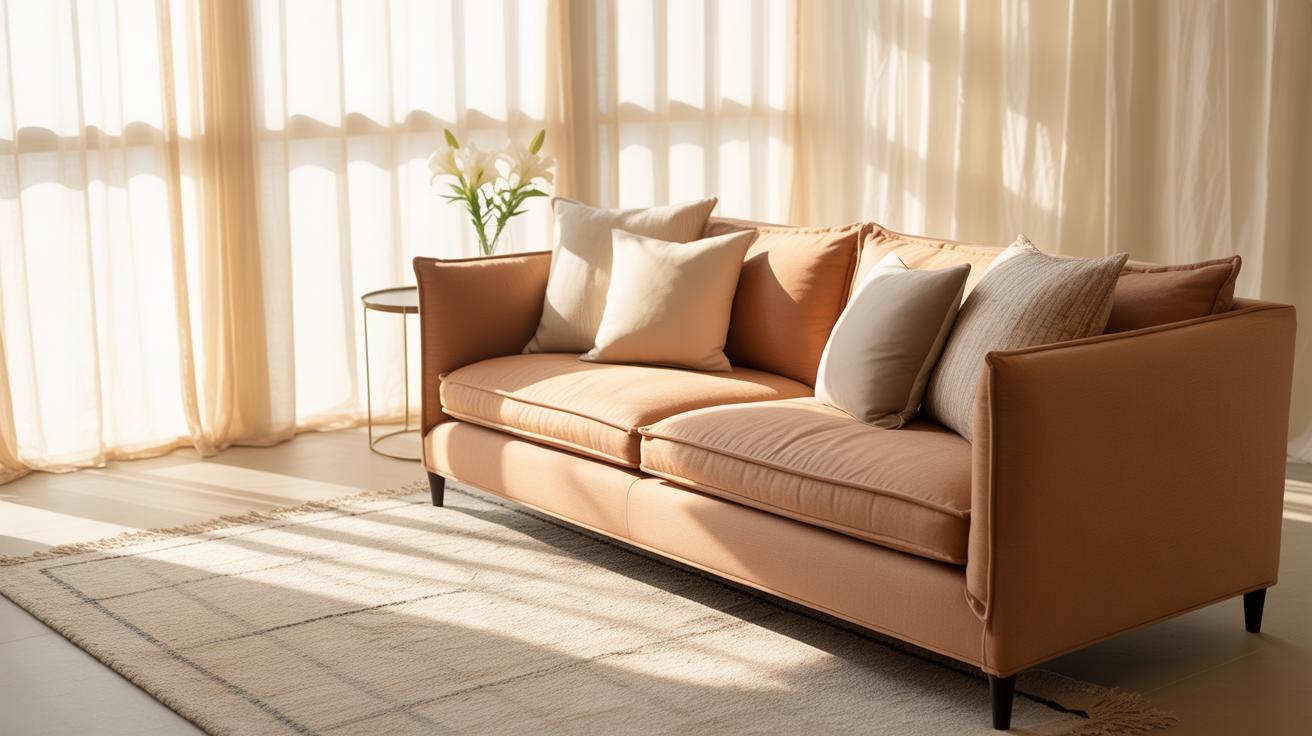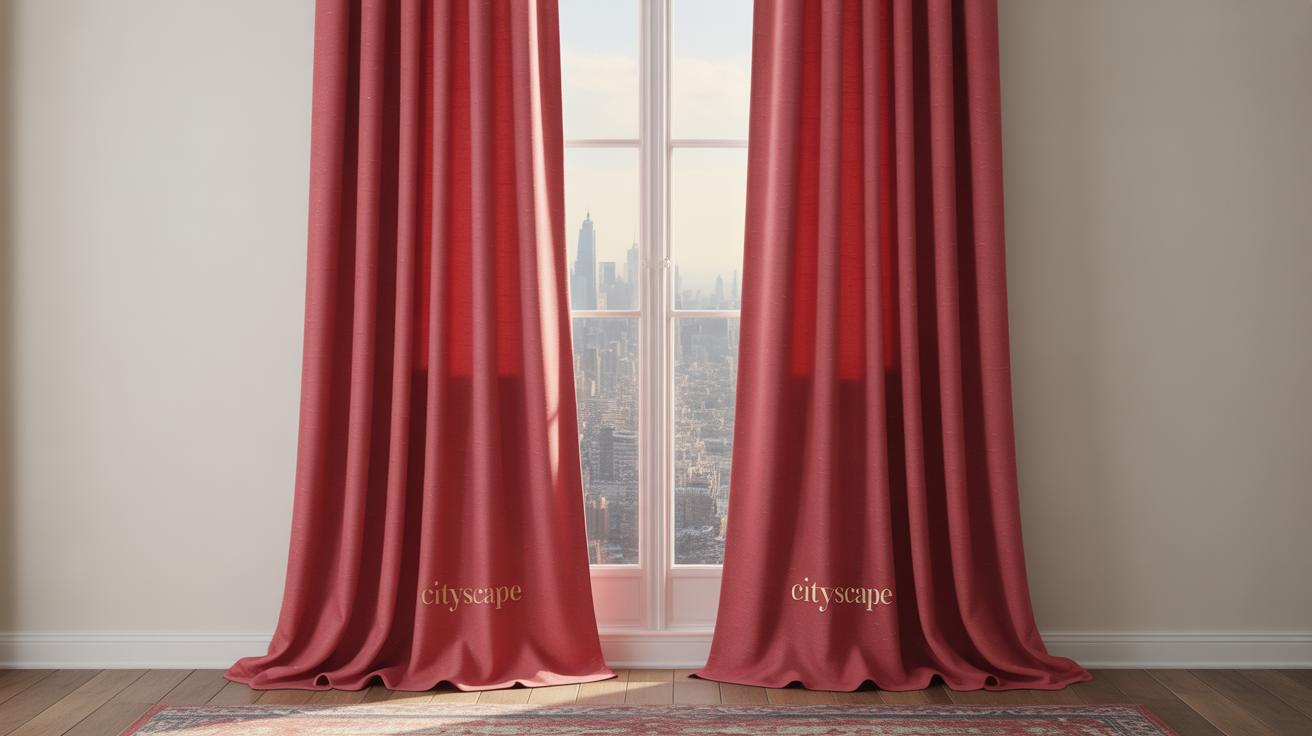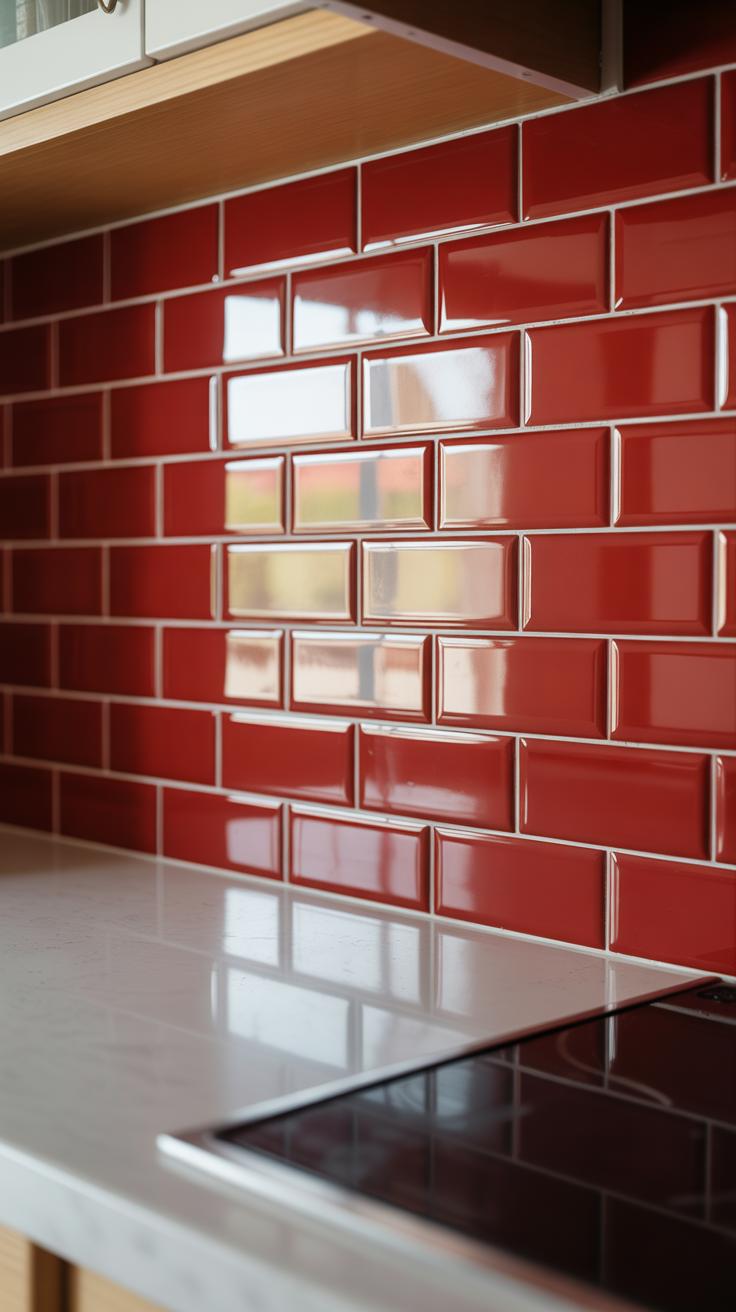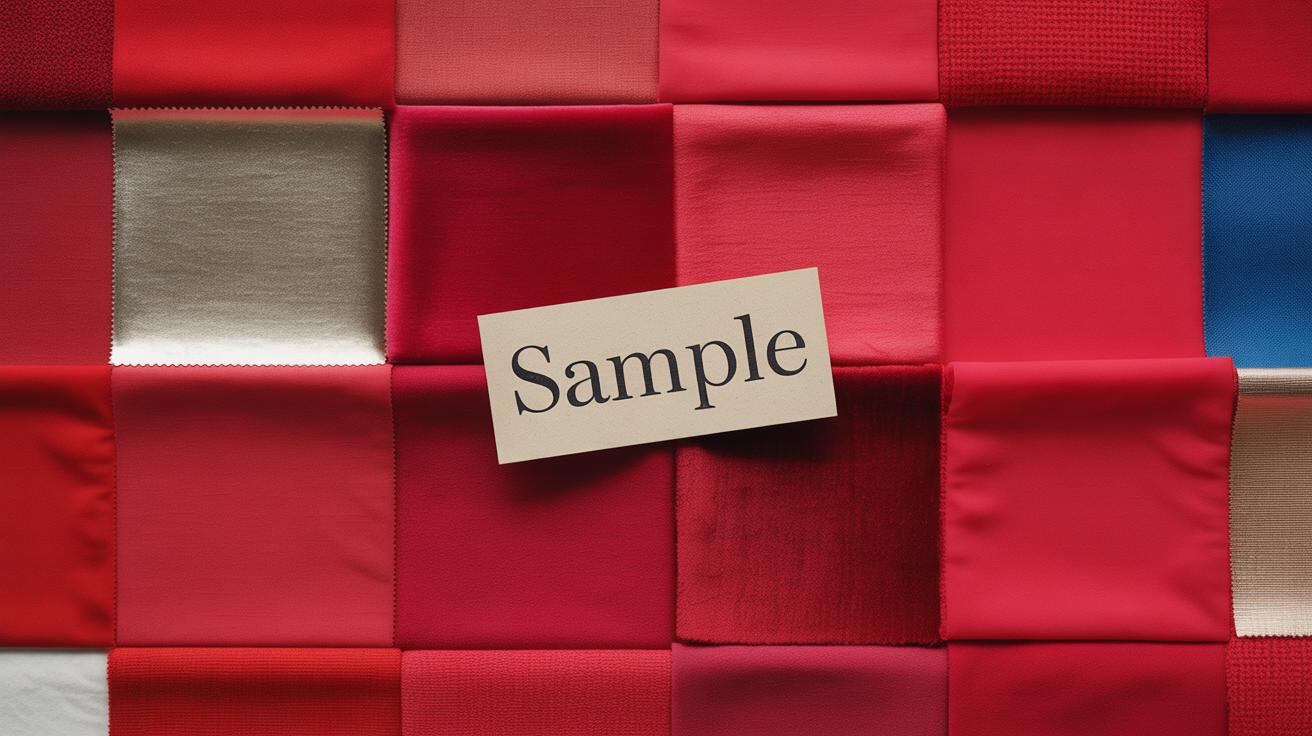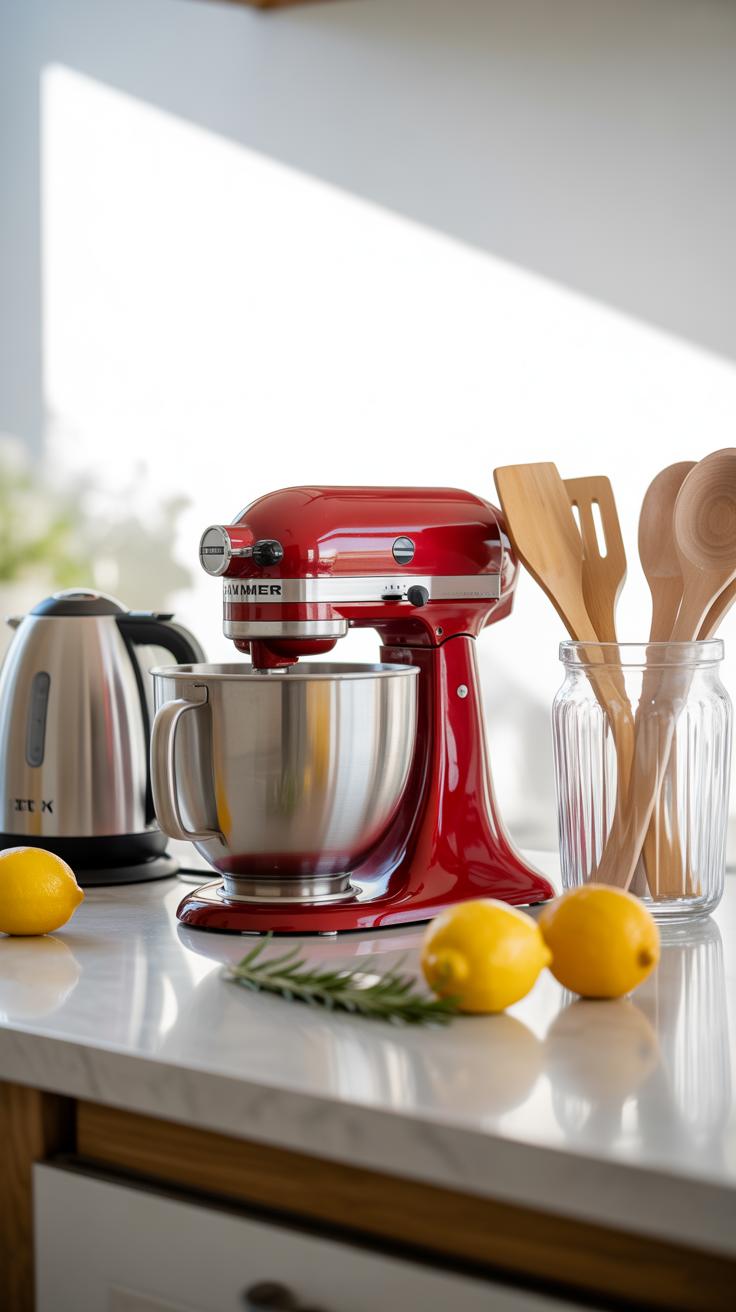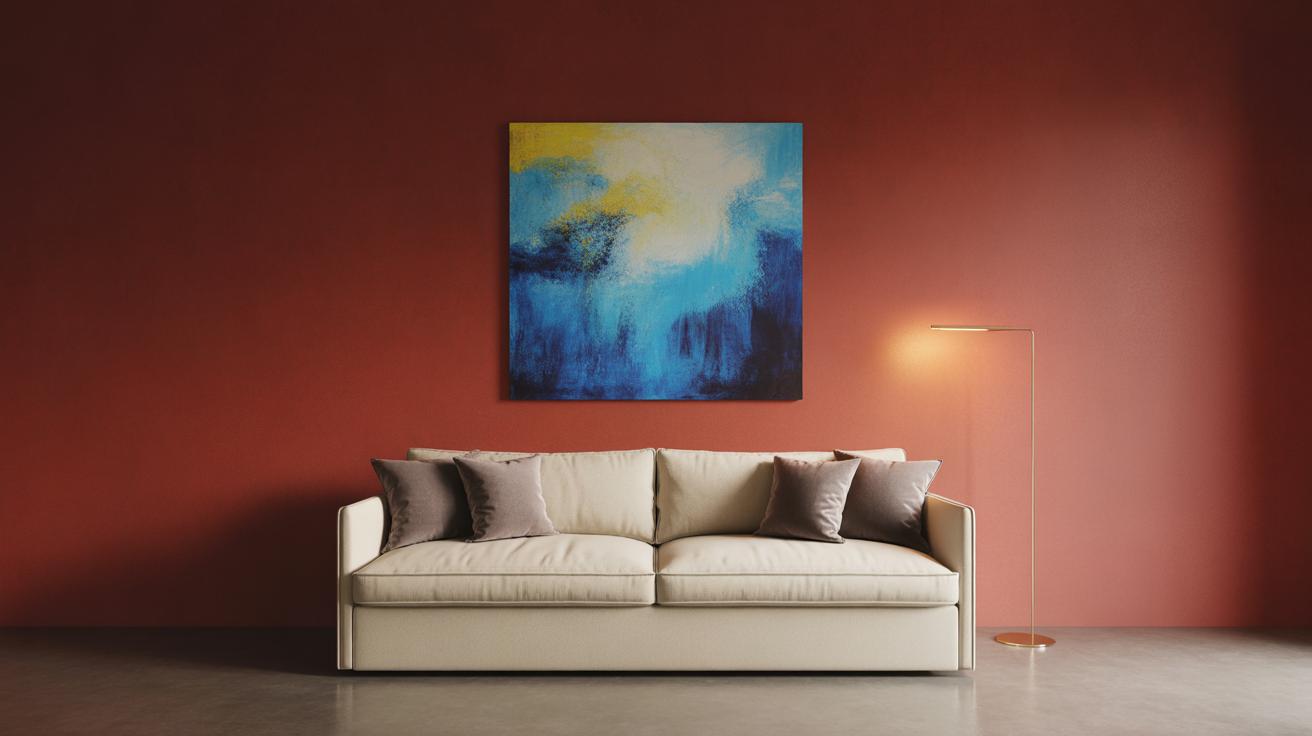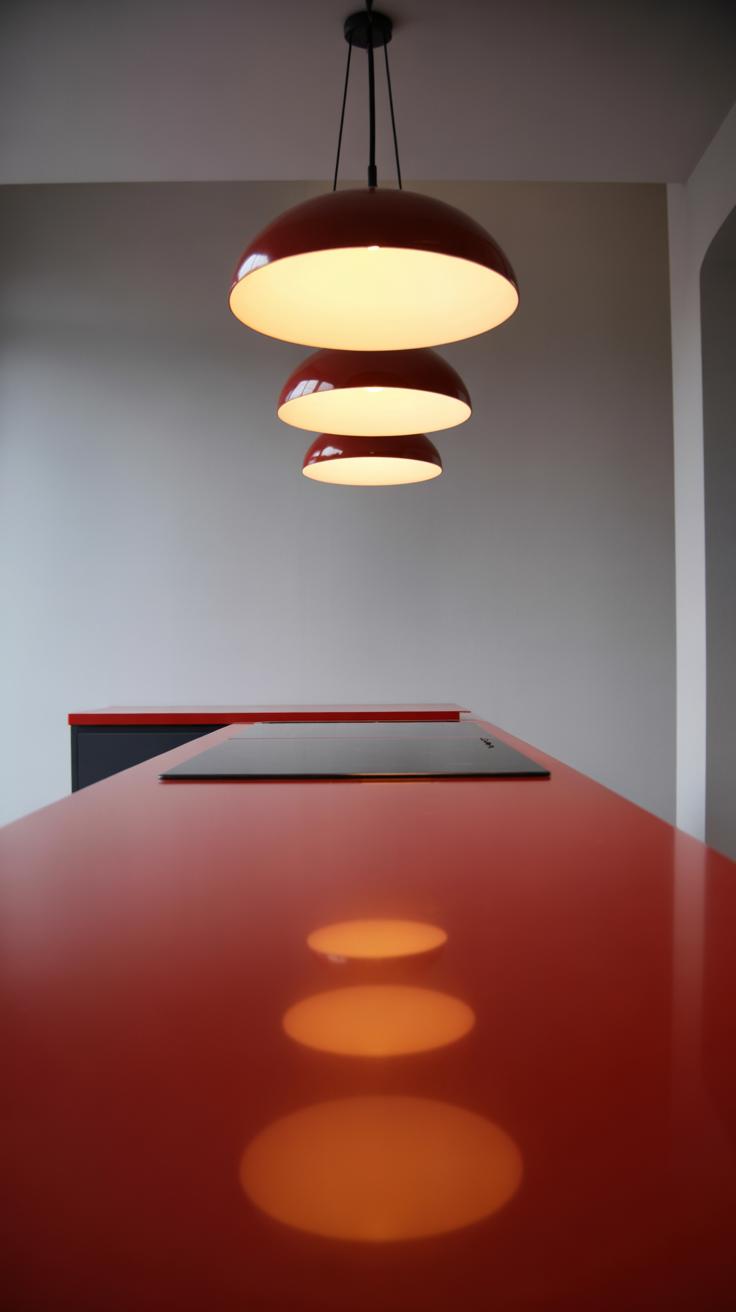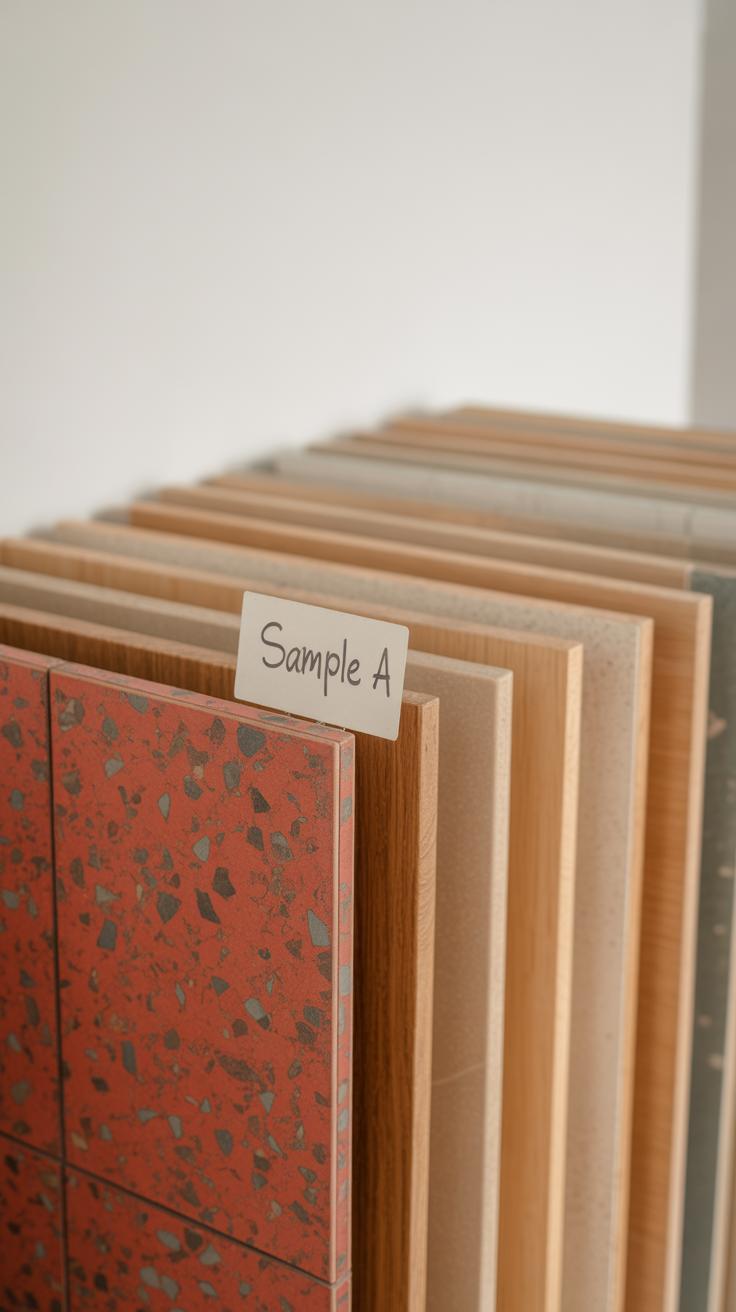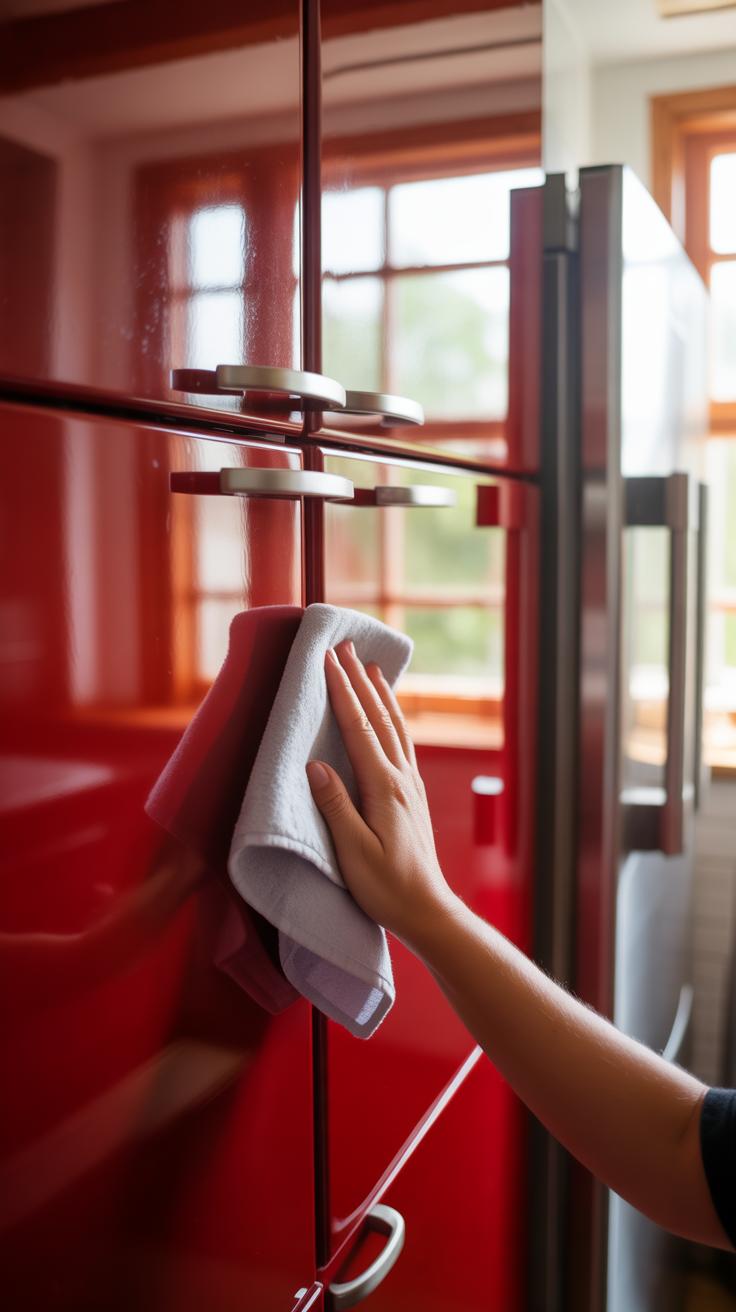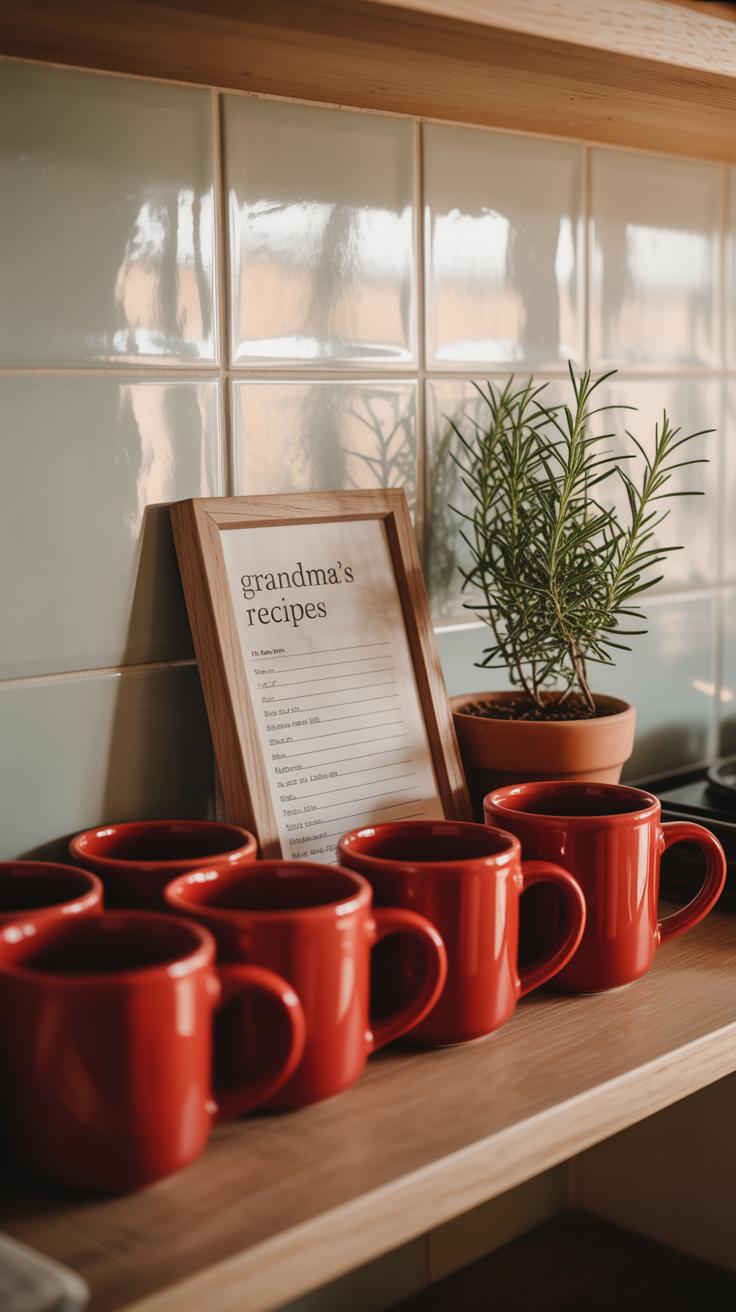Introduction
Red kitchens make a bold statement. They bring energy and warmth into the heart of your home. Using red in your kitchen design can revive an old space or create a fresh, modern look. It is about striking the right balance to create an inviting atmosphere without overwhelming the senses.
In this article, you will explore practical red kitchen ideas. You will learn about picking the right shades of red, blending them with other colors, and smart design tips to make your kitchen both functional and beautiful. By the end, you’ll have a clear vision of how to use red to transform your kitchen space in an engaging way.
Understanding The Impact Of Red In Kitchen Design
Red is a color that instantly grabs attention. In a kitchen, it can change how you feel without you even realizing it. Psychologically, red often stirs up feelings of excitement and passion—maybe that’s why it’s a favorite in spaces where activity and conversation happen. It can raise energy levels, make you feel more alert, and even stimulate your appetite. But that’s not all; red can sometimes feel intense or overwhelming if used too much, so it’s a bit of a balancing act.
People tend to choose red kitchens because the color adds a sense of liveliness that few others do. You’re more likely to feel motivated prepping meals or cleaning up when surrounded by red. That said, some folks find red too bold for their tastes—though lots love the warm, inviting atmosphere it creates, especially for gatherings.
The Energy And Warmth Of Red
There’s no denying red brings heat to a kitchen—visually and emotionally. When you walk into a red kitchen, you might feel a bit more awake or even energized, which can be helpful in the morning or during late-night cooking. It has a way of amplifying the kitchen’s role as a social and active space.
This warmth can make daily tasks feel less like chores. For example, a red backsplash or cabinets might encourage more frequent family meals or spark creativity in cooking. Of course, this can depend on the shade—brighter reds energize, while deeper tones add coziness and a hint of drama.
When To Use Red In Your Kitchen
Choosing red comes down to your style and how you want your kitchen to feel. If you want to make a big statement, red walls create a bold backdrop but may feel too strong for smaller kitchens or those with little natural light. For those spaces, red cabinets or accents might be better, offering pops of color without overwhelming.
- Modern kitchens with clean lines often handle red cabinetry well.
- Traditional or rustic kitchens might benefit from deeper, muted reds as accent colors.
- Open-concept spaces can show off red better since the color has room to breathe.
Trust your reaction. If red makes you feel energized and happy in the kitchen, it’s probably the right choice. If, on the other hand, it feels exhausting or too vibrant, explore softer accents or combine it with neutral tones.
Choosing The Right Shade Of Red For Your Kitchen
Picking the right shade of red can feel tricky because it changes a lot depending on your kitchen’s size and lighting. A small kitchen with limited natural light may feel cramped or overwhelming with a bold red. In those cases, softer or muted reds could work better—they add energy without swallowing the room whole.
On the other hand, if you have a larger kitchen filled with plenty of sunshine or bright artificial light, you might lean toward brighter shades. These can really wake up the space and make it feel lively. Consider how light bounces off glossy surfaces too; it can amplify or soften the red.
Think about how reds shift with daylight versus evening lighting. Sometimes a red that feels intense midday softens by dinnertime, which can be quite pleasant.
Bright And Bold Reds For Vibrant Kitchens
Bright reds have this almost electric effect. They instantly grab attention and inject energy. If you want your kitchen to feel active and sociable, bright red is a good call.
This shade works well in kitchens where the red serves as a focal point—like a backsplash or an island—especially when balanced with neutral tones. It can trigger appetite and conversation, which is ideal in busy family kitchens or homes that entertain often.
Still, it can be a bit much if overdone or placed in a windowless room. But then again, some people find a splash of bright red motivating in the morning—like a kickstart.
Deep Reds For A Cozy Feel
Darker shades of red create a different mood altogether. They feel grounding and warm, perfect for kitchens where you want that inviting, almost snug atmosphere.
Think about deep crimson or burgundy on cabinetry or walls paired with wood tones or soft lighting. It can make even a fairly large kitchen kind of intimate.
But don’t stick dark red everywhere—too much can feel heavy or even oppressive. Used strategically, though, these tones promote calmness and comfort, which might be just what you want during long family dinners or slow weekend mornings.
Sometimes I wonder if deep red works better in kitchens that double as dining spaces, where coziness matters more than energy. What do you think?
Balancing Red With Other Colors
Red is bold and lively, but it can easily overwhelm a space if not balanced well. When mixing red with neutrals and complementary hues, think about what feels natural to you. You might try pairing that strong red with soft whites or cooler grays to create a calmer backdrop. These colors don’t just mute red; they actually highlight it by contrast, making the space feel modern without being too loud.
White and gray act like a buffer zone for red’s intensity. White walls or cabinets paired with red accents open up the space, offering breathing room. Cool grays introduce depth, which can make your red kitchen feel sophisticated rather than overbearing. You may notice how this combo keeps everything fresh and inviting.
Natural wood tones add warmth and texture, making a stark red kitchen feel more approachable. Imagine warm oak or walnut elements—floors, stools, or open shelving—that soften red’s fire. Greenery, whether plants or subtle green accents, brings a touch of life and balance. It’s like a little breath of fresh air amid the bold color. You might hesitate to mix green and red because of holiday connotations, but used carefully, it introduces an unexpected natural freshness that works surprisingly well in kitchens.
Some people embrace a mix of these elements, layering white, gray, wood, and green in different textures. It helps avoid a flat look and keeps your kitchen interesting without feeling chaotic. Would you be open to trying this mix? It’s a bit of trial and error, for sure, but worth exploring if you want that stylish yet welcoming vibe.
Selecting Red Kitchen Cabinets
Choosing red cabinets sets a strong tone for your kitchen. Red isn’t subtle—it demands attention. So, the style and finish you pick can really change the room’s whole mood.
Glossy Vs Matte Red Cabinets
Glossy red cabinets shine, reflecting light and making the space feel brighter and more energetic. They can make your kitchen seem bigger, but they might also show fingerprints and smudges more easily—you’ll probably find yourself cleaning them a bit more than you would like.
On the other hand, matte finishes soften the boldness of red. They create a calm, understated vibe that’s less flashy but still full of personality. Plus, matte tends to hide imperfections better. I once saw a kitchen where matte red cabinets looked warm and inviting, almost like they had personality without shouting.
Modern And Classic Cabinet Designs In Red
Red cabinets work surprisingly well across different styles, but the design shape plays a big role. Sleek, flat-front modern cabinets offer a clean, bold statement, especially with a high-gloss finish. They feel fresh and can make your kitchen feel streamlined.
Traditional red cabinets, with raised panels or decorative details, soften the red’s intensity. They give the kitchen a cozy, approachable atmosphere, maybe a nod to farmhouse or vintage styles. A classic shaker door in a muted red can balance warmth and style without feeling over the top.
So, are you going for a punchy modern look, or something more comforting and timeless? The cabinet style you choose will influence not just how your kitchen looks but how it feels every time you walk in.
Incorporating Red Backsplashes And Countertops
Using red in backsplashes and countertops can be a striking choice, but it’s easy to overdo it. You want that pop of color, sure, but not a kitchen that feels like it’s shouting at you every time you step inside.
Red tile backsplashes can anchor the space well. Think small subway tiles in a glossy finish—they catch the light and add texture without dominating the whole room. Or maybe a mosaic mix where red is balanced with softer neutrals like cream or gray. Personally, I’ve seen kitchens where a red glass tile backsplash acts like art behind the stove, pulling the eye but never overwhelming.
When it comes to countertops, it might be tempting to go bold with red stone slabs, but usually, a more subdued approach works better. Light-colored materials like white quartz or marble can soften the red accents, creating contrast and keeping things fresh. Darker options, like black granite or charcoal concrete, also pair surprisingly well, making the red pop without clashing.
- Use red tiles sparingly for a backsplash—think pattern or texture over an entire wall.
- Balance red backsplashes with neutral cabinetry to avoid visual overload.
- Opt for lighter countertops to brighten and offset deep reds.
- Consider darker, matte surfaces to ground the boldness of red.
Does incorporating red in this way feel like a bold risk? Sometimes. But with the right balance, it can turn a kitchen from just functional into a space you actually look forward to being in.
Using Red Kitchen Accessories To Enhance Style
Red kitchen accessories have a way of injecting energy into the space without dominating it. They act like tiny sparks that link different areas of your kitchen’s design, making everything feel intentional. When you place a few red tools or gadgets around, it feels more connected—like the color isn’t just an isolated splash here or there.
Red Small Appliances And Utensils
Choosing red appliances isn’t just about boldness; it’s about picking pieces that match your kitchen’s vibe. For instance, a red toaster or mixer can stand out against neutral countertops but also harmonize when paired with red accents elsewhere. Think about:
- How the shade of red on appliances blends or contrasts with cabinet finishes.
- Matching utensil handles or kitchenware to these appliances for cohesion.
- Using smaller red tools, like spatulas or measuring cups, to keep the color balanced.
It’s easy to go overboard, but a few well-chosen items can actually emphasize the style without making things feel cluttered. Honestly, I’ve stepped into kitchens where the red kettle and the matching cutting board made the whole room feel more alive. You might find that your daily cooking experience perks up too.
Textiles And Lighting With Red Accents
Textiles and lighting offer subtler ways to bring red into your kitchen’s story. A kitchen towel with red threads or a seat cushion can offer warmth without shouting for attention. Similarly, lighting fixtures with red shades or red-toned bulbs add depth. The reddish glow can soften whites or greys, making the space feel less cold, maybe even inviting, but not overwhelming.
It’s curious how something as simple as a red pendant lamp can change the whole mood in the evening. These details break up the visual monotony and give the space character. They make you wonder—what if the red accents were just slightly different? The small variations in texture and light add dimension.
Lighting Considerations For Red Kitchens
Natural Light And Red Walls Or Cabinets
Natural light plays a big role when you have red walls or cabinets in your kitchen. Red can appear different depending on how much sunlight it receives. Morning light tends to make red look softer, more muted. Later in the day, when sunlight is warmer, red can deepen and even feel a bit intense.
If your kitchen doesn’t get much direct sunlight, you might find red surfaces looking darker, almost heavy. On the other hand, when sunlight floods the space, some reds can start to feel a little glaring or overwhelming. To make the most of natural light, consider these tips:
- Choose lighter red shades if your kitchen lacks sun; they bounce light better.
- Avoid glossy finishes on red cabinets that may create harsh reflections under sunlight.
- Use sheer or minimal window coverings to let in as much light as possible without sacrificing privacy.
- Position mirrors or reflective backsplashes near windows to gently amplify sunlight across red surfaces.
That balance between light and the red’s intensity can be tricky. I’ve seen kitchens where red walls brighten up dramatically with a simple south-facing window. But the opposite can happen too, where red almost absorbs the light, making the room feel smaller.
Artificial Lighting That Complements Red
Picking the right artificial lighting for a red kitchen is quite important. The wrong bulbs can distort red tones, making them look dull or too harsh. Soft warm lighting tends to bring out the richness of red without making it feel overpowering.
Several types of lighting work well here:
- Warm LED lights with a color temperature around 2700K to 3000K; they keep red inviting and alive but not too bright.
- Under-cabinet lights that add focused brightness without washing the red out.
- Dimmer switches—these let you adjust the mood. You might want bright, clear light for cooking but softer, warmer tones during meals.
- Avoid cool white or daylight bulbs, which can clash with red, making it look artificial or glaring.
Personally, I’ve found that layered lighting helps. Mixing ceiling fixtures with task lighting and subtle accent lights lets you control how red shows throughout the day. But it often feels like… you have to experiment a little because red can be quite unpredictable under artificial light. Still, when done right, it creates a space that’s not just stylish but warmly inviting.
Red Kitchen Flooring Options
Wood And Red Kitchens
Wood floors often feel like a natural choice in kitchens, but when working with red cabinets or accents, the exact type of wood matters a lot. Light wood floors, such as maple or birch, can soften the intensity of bold red. They bring warmth without competing for attention, which can be a relief if your red is very strong or glossy. On the other hand, medium to dark woods, like walnut or cherry, introduce a richer contrast, grounding the space and making the red pop—though you have to be careful not to create a heavy, stuffy vibe.
Personally, I’ve found that distressed or matte-finished wood adds texture that prevents the space from feeling too polished or forced. But I wonder, do you want the floor to be an obvious player or more of a background character? Choosing wood with subtle grain patterns usually works best, since strong patterns might clash or feel overwhelming alongside vibrant reds. It’s a bit of a balancing act.
Tiles And Other Durable Floor Materials
When it comes to tiles, the variety is huge. Porcelain and ceramic tiles are popular for their durability and ease of cleaning—practical things, especially in kitchens. Neutral tiles in shades like gray, beige, or charcoal tend to complement red well. They offer subtlety that lets the red shine without too much visual noise. If you want a bit more edge, darker slate or matte black tiles can add modernity, but they risk making the room feel colder if lighting isn’t well planned.
Stone-look tiles, such as travertine or limestone, can bring natural textures that balance red’s intensity, though they sometimes require more upkeep. Vinyl or linoleum options with muted tones or simple patterns can also hold their own, especially if budget or comfort matters. Ultimately, you might ask yourself: do you want the floor to be a solid base, or do you want it to add its own personality? Either choice shapes the kitchen’s feel in very different ways.
Maintaining And Caring For A Red Kitchen
Red surfaces, whether on cabinets or walls, can stay striking if you treat them right. It’s easy to think red just needs a wipe now and then, but a bit more care keeps that color from dulling or looking tired. You’ll want to avoid harsh chemicals that strip paint or finish—gentle cleaners are usually best.
Cleaning Tips For Red Cabinets And Walls
Try this simple routine:
- Use a soft cloth or sponge with warm water mixed with mild dish soap. It’s usually enough for everyday grime without harming the red finish.
- For spots like grease or fingerprints, a vinegar and water mix works well, but test a small area first—sometimes it can dull glossy finishes.
- Dry surfaces quickly to avoid water stains, especially on wood or laminate.
- Steer clear of abrasive scrubbers. They can scratch or wear down red paint, making the surface look patchy over time.
Protecting Red Surfaces From Wear And Tear
Stopping scratches and fading before they start makes a big difference. You might want to:
- Place felt pads or rubber bumpers on cabinet hinges or inside drawers where contact is constant.
- Use cutting boards and trivets to shield counters that are painted or stained red—knives and hot pots are not friends here.
- Keep direct sunlight in check. Red paint can fade after long exposure, so blinds or sheer curtains might be worth considering.
- Consider a clear topcoat if your red cabinets seem too delicate. It adds a layer of defense without changing the color.
Sometimes it feels like managing a red kitchen is a bit of a balancing act—between keeping it lively and avoiding damage. But with a little attention, your red kitchen can remain a bold, impressive space for years to come.
Personalizing Your Red Kitchen Space
Red kitchens already set a bold tone, but making that space truly yours means adding touches that reflect who you are and how you live. Consider the habits that shape your daily routine. If you love morning coffee rituals, maybe a dedicated nook with your favorite mugs and a small tray for essentials fits well. If you’re into entertaining, having open shelves to display quirky glassware or heirloom dishes adds personality.
Art and decor play a huge role here. A splash of red invites contrast, so stuff that balances or highlights reds works well. Think about framed prints or photos that resonate with you—food-themed art, maybe, or abstract pieces that just feel good in the space. Don’t shy away from mixing textures: a woven basket, a vintage clock, or even some plants soften the intensity without losing the kitchen’s character.
When designing, remember your cooking and lifestyle needs. Do you cook elaborate meals or prefer quick fixes? Families with kids might prioritize durable, easy-to-clean surfaces and accessible storage, while solo cooks might want more countertop space or specialized tools at hand. Sometimes, reflecting on what frustrates you in your current setup sparks better design choices. It’s okay if your kitchen doesn’t fit a mold; it’s your space to experiment and evolve.
Conclusions
Red can be a powerful color for your kitchen. When you choose the right shade and combine it thoughtfully with other colors, it creates a space full of life and charm. Your red kitchen can be modern, warm, and inviting all at once.
Remember to plan your design carefully. Use the ideas shared here to find the best approach that fits your style and needs. With the right choices, your red kitchen will be a place where energy meets comfort and where cooking becomes a joyful experience.

